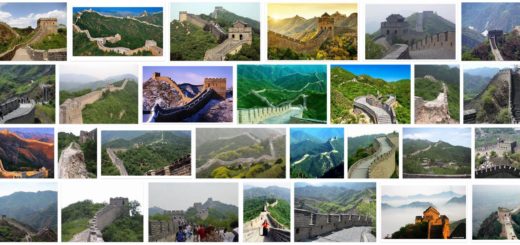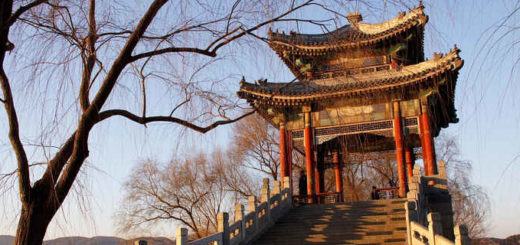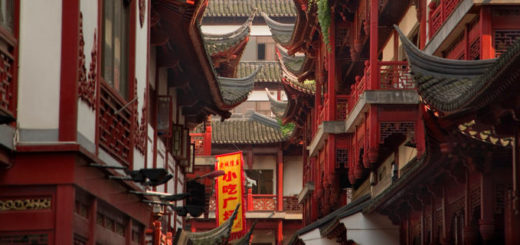Mount Wuyi (World Heritage)
The Wuyi Mountains are located in the northwest of Fujian and consist of natural mountain and river landscapes. It has one of the world’s largest subtropical wet forests. There are also numerous cultural and historical relics in the region.
Mount Wuyi: facts
| Official title: | Mount Wuyi |
| Natural monument: | Wuyi Shan nature reserve and landscape protection area, under protection since the 8th century thanks to imperial decrees, nature reserve since 1979, area 999.75 km², altitude from 200 to 2158 m (Huanggang Shan) |
| Continent: | Asia |
| Country: | China, Fujian |
| Location: | southwest of Wuyishan, southeast of Nanchang |
| Appointment: | 1999 |
| Meaning: | one of the world’s largest and best preserved areas with moist subtropical primary forest, high biodiversity and a significant number of endangered species |
| Flora and fauna: | eleven types of vegetation from the cool coniferous forest to the evergreen rainforest to the bamboo forest, tree species such as Pinus taiwanensis, Tsuga formosana, Buxus sinica, rare species such as the tulip tree and Torreya grandis; a total of 2888 higher plant species and 840 lower plants and fungus species known; 5000 species of animals including 71 species of mammals such as Chinese tiger, leopard, clouded leopard, black muntjac and serau; 256 species of birds, 35 species of amphibians and 40 species of fish, as well as 4635 species of insects |
Protected for twelve centuries
When the “Great Chairman” Mao Zedong once traveled through the wild and romantic mountain world of Wuyi Shan, he is said to have ecstatically uttered: “This landscape is incomparable!” not new. Mao’s imperial predecessors had noticed this uniqueness centuries ago, and so they placed the region under their personal protection between the 8th and 10th centuries. Thus, the Wuyi Mountains are probably one of the oldest protected landscape areas in the world.
The massif comprises a total of three dozen peaks, of which the Huanggang Shan is one of the highest in southeast China. According to extrareference, the location of the mountain range gives it a very special climate. Cool, continental air flows in from the northwest, and warm, humid air from the South China Sea from the south. And on the Wuyi Shan, these two fronts meet, so that moderate temperatures prevail all year round, fog often occurs and abundant rain falls, so ideal conditions for lush vegetation. In the world’s largest contiguous subtropical forest area, there are evergreen deciduous and coniferous forests with centuries-old ginkgos, rare magnolia, oak and cedar species.
Since the end of the 19th century, the mountains have attracted numerous zoologists and botanists from home and abroad who have been able to “discover” hundreds of previously unknown animal and plant species. A significant proportion of these species are endemic, meaning they are not found anywhere else in the world. Unfortunately, many of these plants and animals are now threatened with extinction. This includes, for example, the Chinese tiger, but also the leopard or the Chinese giant salamander, not to mention the tulip tree and the Chinese yew tree. But the Wuyi Shan is not only a real treasure trove for biologists, culturally it is also of particular importance for China and the entire East Asian region. Secluded from the world, hidden in the fifth bend of the “River of Nine Windings” (Jiuqu Xi), is the centuries-old private school “Wuyi Jingshe”. More than eight centuries ago the famous “Neo-Confucian” Zhu Xi taught here. After he had lost his post as court official, he retired to the mountain idyll to devote himself to his spiritual studies. He took the classic Confucian scriptures, revised them and helped them to regain popularity in the 12th century, towards the end of the Song Dynasty. In his doctrine he allowed Daoist ideas to flow into Confucian moral philosophy. Up to the beginning of the 20th century, Zhu’s “doctrine of human nature and reason” was to have a decisive influence not only on politics and society in China, but also in all other East Asian countries. After the Confucian doctrine was demonized by Mao and his followers in the first three decades of the People’s Republic of China, it is enjoying renewed popularity today in the course of the country’s economic and political liberalization. Today, thousands of visitors – mainly from inland and Taiwan – make the pilgrimage to the Zhu Xi Memorial Temple every year to pay their favor to the great Confucian. But primarily because of the unique mountain landscape, the good air and the deep forests, they come to Wuyi Shan, one of the last islands of untouched nature in China’s densely populated east.



